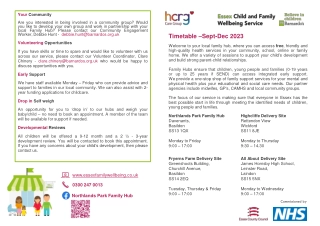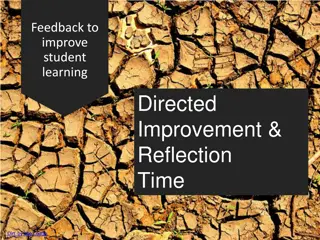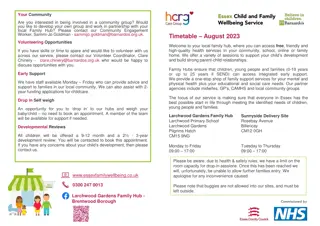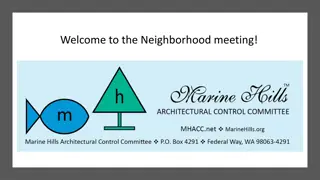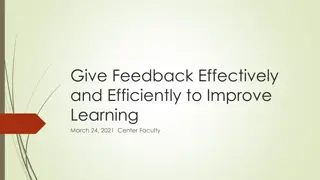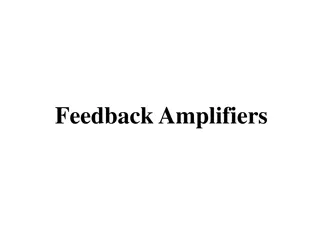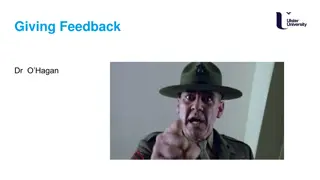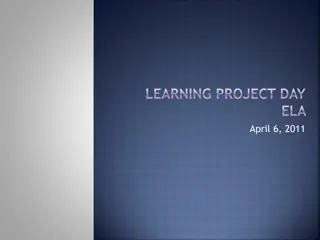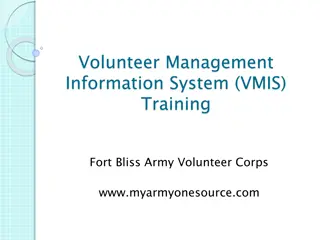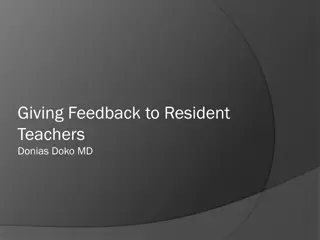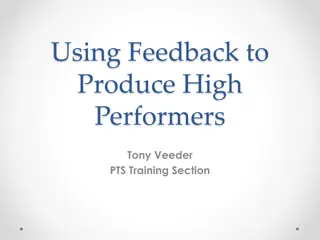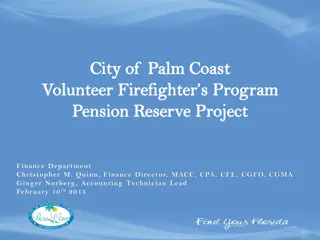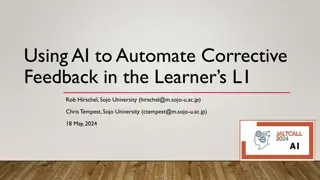
Interacting with Community Members: Best Practices and Soft Skills
Learn the essential soft skills and best practices for interacting with community members when using the Asia Pacific community feedback Kobo form. Understand the importance of building relationships, respecting cultural sensitivities, active listening, empathy, and more to collect high-quality feedback effectively.
Download Presentation

Please find below an Image/Link to download the presentation.
The content on the website is provided AS IS for your information and personal use only. It may not be sold, licensed, or shared on other websites without obtaining consent from the author. If you encounter any issues during the download, it is possible that the publisher has removed the file from their server.
You are allowed to download the files provided on this website for personal or commercial use, subject to the condition that they are used lawfully. All files are the property of their respective owners.
The content on the website is provided AS IS for your information and personal use only. It may not be sold, licensed, or shared on other websites without obtaining consent from the author.
E N D
Presentation Transcript
Using the Asia Pacific community feedback Kobo form Explanations and best practices Restricted
Introduction Why is this needed? Kobo is an extremely user-friendly mobile data collection tool, which is a significant advantage as it doesn t require any prior technical expertise. At the same time, it s a curse in disguise as the user- friendliness can dim the importance of how we ask questions. It s not only about clicking through the form, it s about the interaction we have and relationship we build with communities. How should I use it? This slide deck can be used while training volunteers to emphasise the importance of familiarising oneself with the form before starting interactions with communities. It can also be shared with volunteers directly so they review it and prepare themselves at their own pace. Restricted
Soft skills How to interact with community members Restricted
Soft skills Best practices Being able to effectively interact with community members can significantly affect the quality of collected data/feedback. The way we behave can also influence trust trust is something not easy to build but extremely easy to lose. This guide was designed to help you familiarise yourself with the community feedback form. At the same, you should not forget the following best practices while interacting with community members: 1. Respect the community members. Make sure the interaction you have is a conversation and not a robot-like reading from a screen. Maintain eye contact (if appropriate), ensure a friendly atmosphere and respond to what is said to you. 2. Respect cultural sensitivities. Understand and respect the cultural norms, values, and sensitivities of the community. This includes dressing appropriately, using respectful language, respecting gender and other societal norms, and being mindful of cultural customs. 3. Listen actively. Show genuine interest in what the community members have to say. Active listening involves making eye contact (if culturally appropriate), nodding, and occasionally summarizing what has been said to ensure understanding. 4. Be empathetic and open-minded. Approach every interaction with empathy and an open mind. Understand that community members may be going through difficult times and require a sensitive approach. Restricted
Soft skills 5. Use clear and familiar language. Communicate in a language that is easily understood by the community members, avoiding technical jargon or complex terminology. 6. Be patient and flexible. Be prepared to spend enough time with community members, allowing them to share their thoughts and feelings without rushing them. Flexibility in approach and scheduling can also help accommodate their availability. Feedback collection is not about quantity but about quality. 7. Ensure confidentiality. Assure community members that their feedback is confidential and will only be used to improve services or address their needs. This helps build trust and encourages openness. 8. Follow ethical guidelines. Adhere to the ethical guidelines and standards set by the Red Cross, ensuring that your behaviour always upholds the organization's principles and values. 9. Provide information about the purpose. Clearly explain the purpose of collecting feedback and how it will be used. This transparency helps build trust and motivates community members to participate. 10. Provide feedback on outcomes. Inform the community members about how their feedback has been used and the outcomes achieved. This closes the feedback loop and shows that their input is valued and has made a difference. Restricted
Soft skills 11. Maintain neutrality. Remain neutral and non-judgmental during interactions. Avoid expressing personal opinions or biases that may influence the feedback process. 12. Encourage participation. Encourage all community members, especially those who are often underrepresented or marginalised (i.e. people with disabilities, minorities etc.), to share their feedback. Reach out specifically to these groups to ensure their voices are heard. 13. Ensure accessibility. Make sure that the feedback process is accessible to everyone, including those with disabilities. This may involve providing physical accommodations or using alternative communication methods. 14. Don t be ashamed of asking for help. Nobody knows everything. Recognise the limits of your expertise and do not hesitate to seek support or advice from colleagues or supervisors when faced with complex situations or feedback. It s better to tell the community member clearly that you do not know the answer but you will ask to get the information than say nothing or try to answer without having the needed information. Although the above-mentioned practices sound obvious, it s the obvious that we often forget. So please make sure you consciously treat other people as you would like to be treated yourself. Restricted
Kobo form Questions in the feedback form and what they really mean Restricted
Structure of the guide Question What information you want to gather and why it s important. When to ask: before/during/after Mandatory to answer: Read out loud: Explaining hints: Explaining options: Potential modifications: Potential sensitivities: Questions are presented in the same order you can find them in the form. Not all these points apply to all questions. Restricted
Complete before interactions Add information based on your own knowledge, do not ask community members any of the following Restricted
Date received It s important to track when the feedback was received to understand how long it takes on average to respond to it and understand trends. In some cases, the response can be provided on the spot. In others, it may require some follow-ups and more time. When to complete: BEFORE AN INTERACTION Mandatory to answer: YES Read out loud: NO Explaining options: The date should be selected from a pop-up calendar. Do not try to type the date in as it may affect the format consistency. Potential sensitivities: NO Restricted
Received through Recording feedback channels helps understand which channels people prefer using or use more frequently or if there are any channels used by specific groups of people or for specific reasons. If a channel exists but is not (frequently) used it may be worth checking if communities would prefer a different channel or if they are aware of its existence. When to complete: BEFORE AN INTERACTION Mandatory to answer: YES Read out loud: NO Explaining options: Single-choice. The default list of feedback channels is very simple and covers only the most frequently used channels everyone should be familiar with, if needed update the lists with feedback channels used by your National Society. Potential modifications: If your National Society uses different or more feedback channels, feel free to add the additional ones to the list and remove those that are not used. Potential sensitivities: NO Restricted
Name of staff/volunteer Sometimes recorded feedback requires some clarifications or follow-ups with the person who collected it. This information makes it easier for the National Society or IFRC to get in touch. When to complete: BEFORE AN INTERACTION Mandatory to answer: YES Read out loud: NO Explaining options: This is a free entry type of question. Please type in your name or a code assigned to you. Potential modifications: If your National Societies has a predefined list of people responsible for feedback collection, you can create a drop-down list with the name to then speed up the selection process. Potential sensitivities: Full names are considered personal and sometimes sensitive information. Please make sure you apply your local data protection regulations. Restricted
Country This question is hidden so you will not see it while completing the form. At the same time, you will see a country name already prefilled in the collected data export. The purpose of this question is to be able to feed data from different National Societies into the regional feedback dashboard. When to complete: THERE IS NO NEED. The form your National Society use should have your country already predefined, that is why you don t need to take any actions here. Restricted
Branch This information makes it easier for the feedback manager to share feedback back with the branches, follow up on outstanding cases with relevant branches and contact persons responsible for addressing feedback in their branches. Disaggregating data by branches can also reveal trends specific to the branch. When to complete: BEFORE AN INTERACTION Mandatory to answer: YES Read out loud: NO Explaining options: A single-choice list of branches. Potential modifications: The list should be adjusted by each National Society using this form so it reflects the actual list of their branches. Potential sensitivities: NO Restricted
Province Collecting and analysing geographical information is critical to understanding trends and specificities of different locations. Are there any significant differences between various locations? When to complete: BEFORE AN INTERACTION Mandatory to answer: YES Read out loud: NO Explaining options: A single-choice list of provinces. Potential modifications: The list should be adjusted by each National Society using this form so it reflects the actual list of provinces in the country. Potential sensitivities: Although there are no direct sensitivities, it should be noted that geographical disaggregation combined with demographic details can sometimes allow for a re-identification of a person, so it s important to keep data stored securely. Restricted
Constituency / Ward / Community / Village / Location Collecting and analysing geographical information is critical to understanding trends and specificities of different locations. Are there any significant differences between various locations? When to complete: BEFORE AN INTERACTION Mandatory to answer: NO Read out loud: NO Explaining options: Depending on the level of details, either single-choice lists or free text can be used. Potential modifications: The list should be adjusted by each National Society using this form so it reflects the actual list of provinces in the country. Potential sensitivities: Although there are no direct sensitivities, it should be noted that geographical disaggregation combined with demographic details can sometimes allow for a re-identification of a person. The more detailed the disaggregation, the greater the risk of re-identification Restricted
How to ask for and record feedback This is the core part of the feedback collection process. Ask question, listen actively, and take notes of what is shared with you Restricted
Introduction and Consent Restricted
Introduction and Consent Respecting people s autonomy and right to privacy, you need to obtain informed consent before proceeding with asking more questions. Informed means that a person you are speaking with gets familiar with who you are, what you do, why you ask questions, and what you will do with the information collected. When to ask: DURING AN INTERACTION Mandatory to answer: YES Read out loud: YES although it s better if you simply explain in your own words who you are, what you are doing, and how the information will be processed; remember to ask for consent before moving to the next question. Explaining options: Single-choice list. If you do not obtain consent and select No , the form will take you to the Thank you screen as no further information can be collected without consent. Option Unknown can be selected if you did not receive explicit consent but the feedback was shared publicly through e.g. Red Cross social media channels. Restricted
Gender Gender information helps to understand if programmes are inclusive and meet the diverse needs of the community. It can also help identify if there are any significant differences between genders based on the feedback they share are men and women equally vocal? Do they share the same opinions? When to ask: DURING AN INTERACTION Mandatory to answer: YES Read out loud: It depends if you are 100% sure you can respond to this question yourself based on your observations you do not need to ask, otherwise you can ask do you identify as and read out the list. Explaining options: Single-choice list. Potential sensitivities: Detailed demographic information (especially outliers, e.g. a LGBTIQ+ person) combined with other data points can sometimes facilitate re-identification of a person. Therefore, we need to be mindful of how the data is processed and shared. Restricted
Age range (years) Similar to gender, age information helps to understand if programmes are inclusive and meet the diverse needs of the community. It can also help identify if there are any significant differences between different age groups are all of them equally represented? Do they share the same opinions? When to ask: DURING AN INTERACTION Mandatory to answer: YES Read out loud: YES Explaining options: Single-choice list. Potential sensitivities: Detailed demographic information (especially outliers, e.g. a very old or young person) combined with other data points can sometimes facilitate re-identification of a person. Therefore, we need to be mindful of how the data is processed and shared. Restricted
Has the person received RC support or services in the last 3 months? This information can facilitate understanding of the reach and impact of services provided. At the same time, it can show if those who received support share similar opinions to those who didn t and, potentially, if the feedback around the latter is related to the absence of support. When to ask: DURING AN INTERACTION Mandatory to answer: YES Read out loud: YES Explaining options: Single-choice list. Potential sensitivities: Some may wish to keep their use of certain services confidential, so reassure confidentiality and select Prefer not to answer . Restricted
First vulnerability | Second vulnerability Similar to gender and age range, vulnerability information helps to understand if programmes are inclusive and meet the diverse needs of the community. When to ask: DURING AN INTERACTION Mandatory to answer: YES Read out loud: You can read the list of options out loud but also, acknowledging the sensitivity of this question, you can show the list to the person you are interacting with and ask them to select the relevant option/s or ask if any of this applies to them. Explaining options: Single-choicelist. This question is repeated twice to allow recording for more than one vulnerability, if such exists. Potential modifications: The list can be expanded to include more types of vulnerabilities or collect more detailed information but it is recommended to keep it simple. Potential sensitivities: Although no personal is collected, vulnerabilities are considered highly sensitive information, that s why you should ensure privacy and respect when collecting this data. Restricted
Feedback Community feedback or insights are information shared with us by members of communities. Looking into such information can help: increase our efficiency and impact by showing what is most important to the community, work in a trusted partnership with communities by engaging in a dialogue on topics that community members are most concerned about, avoid doing harm and ensure accountability to communities by highlighting critical issues, leverage our auxiliary role and coordinate with authorities and other humanitarian stakeholders supports our fundraising efforts and helps to gain donors trust by showing we work transparently. To learn more about how community feedback helps us do a better job, check out Module 1 of the IFRC Feedback Kit. When to ask: DURING AN INTERACTION Mandatory to answer: YES Read out loud: YES Restricted
Feedback continued Explaining hints: Feedback is not only collected but also analysed and used for making programmes better respond to community needs. To allow this, feedback needs to be recorded in a way that can be understood not only by the person taking notes of it but also by anyone else responsible for working with feedback data. That is why it s crucial to avoid writing down one-word feedback, instead take enough notes to tell the full story. Mandatory: YES Explaining options: Free text. Potential sensitivities: Feedback may include personal stories, therefore should be handled with care and respect. Why did the COVID-19 vaccine come in so many different names? Can the WHO or Ministry responsible explain the difference in vaccine names? Vaccine 30-39 years old Woman from xx district 30-39 years old woman from xx district Restricted
Thank you / end of conversation note Saying thank you at the end of the interaction shows appreciation for the community member s time and information shared, ending the conversation on a positive note and ensuring that the person was heard. When to ask: DURING AN INTERACTION Mandatory to say: YES Read out loud: YES or even better use your own words. Explaining options: It s a note helping volunteers to navigate the end of an interaction. There is no need to take note of anything here. >> The next questions should be addressed only once the interaction has been concluded. Restricted
Complete after collecting feedback Add the following information once you finished the conversatio Restricted
Urgent or sensitive information This is the moment when you need to reflect on the feedback you received and identify if the information requires immediate action and special handling. Sensitive feedback is any information shared by community members that can put them or other people linked to it at-risk and needs to be handled with care. This could relate to: Identity-based violence, Sexual and Gender based violence Corruption by community members or leaders, staff, volunteers, Security threats, Sexual exploitation and abuse, Breaches of child safeguarding policies, Any breach of the Code of Conduct. >> To learn more about sensitive feedback, please refer to the IFRC Feedback Kit, Module 5. Restricted
Urgent or sensitive information continued When to complete: AFTER AN INTERACTION Mandatory to answer: YES Read out loud: NO Explaining options: Single-choice. If a person is unsure, selecting the Don t know option is recommended this can still be changed in the coding framework by a feedback manager analysing feedback. Potential sensitivities: This is highly sensitive information. Please refer to the following slides to learn more about handling sensitive feedback. Restricted
Urgent or sensitive information continued As RCRC staff, we can often be the first point of contact with people in the community, and therefore survivors first point of contact. It is crucial that we, at minimum, do no further harm and support people to receive the available resources. Our mandate is to provide non-judgmental and non-discriminatory support to people in need regardless of their gender, sexual orientation, gender identity, marital status, disability status, age, ethnicity/tribe/race, religion, who perpetrated/committed violence, and the situation in which violence was committed. Restricted
Urgent or sensitive information continued If you think you received sensitive feedback: Do log the feedback as sensitive, Do refer the survivor to any local services that could support them, Do ask if there are any additional details they would like to share, Do let the survivor know when they could expect to hear back from you, Do keep all information shared confidential, Do maintain the safety of anyone sharing sensitive feedback, Do refer to a CEA or PGI colleague if you re not sure what to do. Do not share the feedback with as many people as possible, Do not ask a lot of questions to understand the situation better, Do not laugh at the person for sharing information, Do not start avoiding the person sharing feedback, Do not decide if the person is worth helping, Do not roll your eyes if what the person is sharing doesn t sound possible, Do not gossip about any feedback you heard, Do not ask the survivor if they might be overreacting. Restricted
Eight steps for a safe referral Ensure a service mapping by your protection, gender and inclusion colleague and training on survivor centred approach for volunteers. 1. Identify the problem what does the person need? 2. Identify which organisation or agency can meet the person s need? 3. Contact the service provider to confirm eligibility 4. Explain the referral to the survivor 5. Document consent 6. If the survivor consents, make the referral to the service provider 7. Follow up with the survivor and service provider if appropriate 8. Ensure safe data storage and confidentiality Restricted
Urgent or sensitive information What to say when someone shares sensitive information with you. These are examples and should be adapted according to situation/context: LINK LISTEN LOOK I am not a counsellor, but I can share information that I have. There are some organisations that may be able to support you and/or your family. Would you like to know about them? How can I support you? You seem to be in a lot of pain right now, would you like to go to the health clinic? Everything we talk about together stays between us. I will not share anything without your permission. Does this place feel okay for you? Is there another place where you would feel better? Do you feel comfortable having a conversation here? Is there anyone that you trust that you can go to for support, maybe a family member or a friend? Would you like to use my phone to call anyone that you need at this moment? I will try to support you as much as I can, but I am not a counsellor. I can share any information I have on support available to you. Would you like some water? Please feel free to have a seat. When it comes to next steps what you want and feel comfortable with is most important I m sorry this happened to you. What happened to you was not your fault. Do not feel pressure to make any decisions now. You can think about things and always change your mind in the future. Restricted
Urgent or sensitive information Exceptions to maintain confidentiality: When the perpetrator is an RCRC staff or volunteer, If a child is in danger, If the person intends to hurt others or themselves. Be sure to inform the person about the procedures and reporting. >> To learn more about safe referrals, please refer to the IFRC Protection, Gender and Inclusion in Emergencies Toolkit, Tool 3.2.0. Restricted
Status Tracking feedback status is a key component of accountability, which is why tracking the National Society s responsiveness to received information is so important. When to complete: AFTER AN INTERACTION Mandatory to answer: YES Read out loud: NO Explaining options: Not answered a volunteer did not have enough information to answer. Requires a follow- up. Answered a volunteer gave an answer. Does not require a follow-up. Referred feedback relates to an external organisation or person and the volunteer shared the information how to reach that organisation, the referral should be described in the next step. Partially answered if a person shared more than one feedback and a volunteer was not able to respond to all. Requires a follow-up to respond to all feedback components . Does not require an answer some feedback will not require an action, e.g. a person sharing their appreciation for the quality of services provided by the National Society. This does not require any action or follow-up except for a thank you. Restricted
> Given answer Sharing responses given to feedback can help build a repository of Frequently Asked Questions (FAQ) and hence help other staff and volunteers to provide consistent and accurate answers. When to complete: AFTER AN INTERACTION Mandatory to answer: Only if Answered was selected under Status . Read out loud: NO Explaining options: Free text. Share enough details to make the input meaningful to other people reading it. Potential sensitivities: There should be no sensitive information input into the text box. Restricted
> Referral If a person requires a referral to another organisation/service provider, the details of this referral should be provided here. Take note of where the person was referred to. This will help track the general referral pathways as well as help other staff and volunteers understand the referral practices. When to complete: AFTER AN INTERACTION Mandatory to answer: Only if Referred was selected under Status . Read out loud: NO Explaining options: Free text. Share enough details to make the input meaningful to other people reading it, ie. Referred to Oxfam hotline 12345 Potential sensitivities: There should be no sensitive information input into the text box. Restricted
> Partial answer if a person shared more than one piece of feedback and a volunteer was not able to respond to all raised issues, details on the provided answer should be noted here. Having access to this information, the feedback manager will be able to follow up on the outstanding issues. When to complete: AFTER AN INTERACTION Mandatory to answer: Only if Partially answered was selected under Status . Read out loud: NO Explaining options: Free text. Share enough details to make the input meaningful to other people reading it. Potential sensitivities: There should be no sensitive information input into the text box. Restricted
Comments This is the last question in the feedback form. It provides an open-ended opportunity for additional observations made by a person receiving feedback. If there is a crucial need to follow up with the feedback giver contact details can be included here. When to complete: AFTER AN INTERACTION Mandatory to answer: NO Read out loud: NO Explaining hints: If a person recording feedback does not have any additional information to share, this text box can remain blank. Explaining options: Free text. Share enough details to make the input meaningful to other people reading it. Potential sensitivities: In case of sensitive feedback, the comment box might also contain sensitive information (e.g. additional details shared by the community member). In such cases, this information must be handled accordingly. Restricted
If you have any questions, please contact your National Society s CEA and/or Feedback colleague. Viviane Fluck, PhD, Regional CEA coordinator, IFRC Asia Pacific, Viviane.fluck@ifrc.org For more information, you can also check out the IFRC Feedback Kit. Restricted

